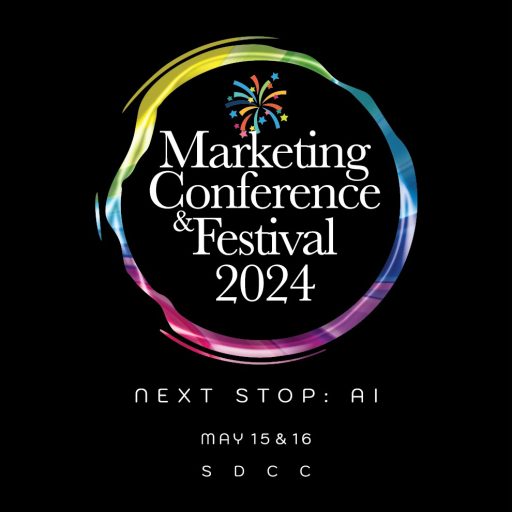BY SALIM KHUBCHANDANI
The big data phenomenon, digital transformation (aka Industry 4.0) and all else that has transformed way of living, obviously has come about thanks to the internet.
In fact, before proceeding, and without wanting to digress too much, so significant has been the role of the Internet in our lives that it makes me wonder whether in marketing or business terms, we may at some point in history come up with appropriate abbreviations to start referring to these eras as the per-internet and post-digitisation eras, almost like BC and AD.
Perhaps for now we could refer to these as the pre-internet or PI and micro-segmentation or MS eras, with the high levels of micro-segmentation possible post the internet .
Is Digital the New Mass Medium?
If we look back over the years, in the pre-internet or PI era when channels like print, radio, television, outdoor formed the media mix for any brand, the objective was to reach out to as many or as large audiences as possible, with the intent of drawing interest, in the classical AIDA (Awareness-Interest-Desire-Action) model.
Returns in marketing and communication terms were then measured based on reach, and opportunities to see ads. This older model doesn’t hold good any more.
Whilst the AIDA model conceptually still holds well and may have undergone only some refinement, the duration span of this model has shortened considerably across product categories.
Growing numbers and populations across many digital communities makes them attractive for brands, promising a significant reach.
With the temptation of casting the net wide, many marketers unfortunately still attempt to exploit these digital or social channels on a mass media scale, engaging in what I’d like to term as ‘carpet-bombing’ or ‘net-casting’, through boosting ads on Facebook, pushing ads on Twitter, and even emailing similar messages across audience segments. Instead however, every individual could and ought to be regarded and targeted as such, in a personalised manner.
The Re-incarnation of ‘Direct Marketing’
Direct Marketing as a channel in the 90s was short-lived. It was measurable, more number-driven and thus boring, more for the scientific minded and hardly award-winning for the creative gurus. It was hardly considered fashionable or sexy (as a profession to be in), in fact quite the opposite.
In principle the key tenets of Direct Marketing are: personalised and direct, measurable, and with a strong call-to-action. Today, Facebook and Google are highly sophisticated direct marketing engines, where marketers buy ads and measure efficiency on basis of cost per click and other similar parameters, with digital media space being auctioned.
Importantly, while ‘traditional Direct Marketing’ if I may coin such a term, in the PI era largely relied on demographic data for a ‘different strokes for different folks’ effect, the internet has led to the explosion of psychographic and behavioural data, making personalisation possible to great levels in the MS era.
The internet and accompanying technology and marketing automation tools have made measurement instantaneous, and through the single additional key dimension of speed transformed ‘direct marketing’ – campaigns are measurable in real-time, personalisation is highly do-able through micro-segmentation, with cross-channel synergistic communication.
Here, omnichannel marketing adds hugely to the success of campaigns.
What Has Changed?
Not all brands doing ‘direct marketing’ with the help of Google and Facebook may be getting built, but instead get a momentary shot of adrenaline.
With the internet and thus big data, brands and marketers taking the ‘direct’ ride on the backs of Facebook and Google must exercise the ability to take the ‘personalised’ approach to optimise returns and reap the real benefits of the MS era, rather than just fall for the attractiveness of the massive reach of these platforms.
Big data and the internet is not just about having massive volumes of data but more importantly the veracity and variety of sources which make micro-segmentation possible and even allow for targeting based on the time dimension, beyond just space or geo-targeting.
Using an omni-channel marketing approach, deployment of several channels together with consistency and synergy across channels is key to the success of campaigns through personalisation.
Real Measurement
Is the brand missed?
I recently worked for a leading brand which claimed pride in having a decent sized email base of its customers to whom we diligently sent out daily newsletters. We decided for a while to experiment and reduce the frequency of the newsletter to just twice a week, against the daily issue – and nobody on the email base queried the drop or missed the issues.
This example establishes a key measurement parameter which is towards finding out who would truly miss you as a brand and how large is that audience – leaving a vacuum and being missed if you’re gone means you truly matter.
What are people saying about the brand?
Another key parameter lies in establishing what people perceive about the brand and if this measures up to and is in sync with the brand proposition. In the urge to reach out to larger segments in a hurry and establish the brand in more minds, often focus even with regards to product category gets diluted resulting in dissonance and being seen as a ‘schizophrenic’ brand.
In other words, in trying to establish or convey several things about the brand, ending up saying nothing at all.
Another important aspect that cannot be ignored is that brands are built and there to stay for the long haul on the fundamental premise of consumer trust and brand promises being met. And trust takes a long time to build, but can be destroyed very quickly, as in the case with any partnership.
Less is more in Marketing, even with Big Data
In the ultimate analysis, while digital communities have acquired mass proportions and the internet has led to the data explosion making these large communities accessible, what cannot be overlooked is the quality of data and thus the ability to communicate with those who matter with the relevant message almost through a real-time dialogue, rather than communicating with lots of people.
Additionally doing and saying something that matters to fewer people in groups, and harnessing their trust and loyalty, works far better than attempting to continue to say many things to everybody out there.
Salim is Founder of On-Target Marketing Solutions, Malaysia, a digital marketing and data analytics provider. He is passionate about data and strongly believes in the power of data to come up with great insights and winning ideas, and consults for brands in Marketing Strategy, Marketing Analytics and Performance Marketing. He is contactable at [email protected]
This article first appeared in MARKETING magazine Issue#235.
Download PDF here, or share via WhatApp
MARKETING Magazine is not responsible for the content of external sites.
The Malaysian Marketing Conference & Festival 2024 at the Sime Darby Convention Centre is a TWO-day marketing event for all those in Marketing, Media, Advertising, PR, Digital, Data, and more….
The experience is on May 15 & 16, with Keynote Speakers, multiple tracks or Breakaway Sessions hosted by our booth partners who will show you the latest in the industry.










